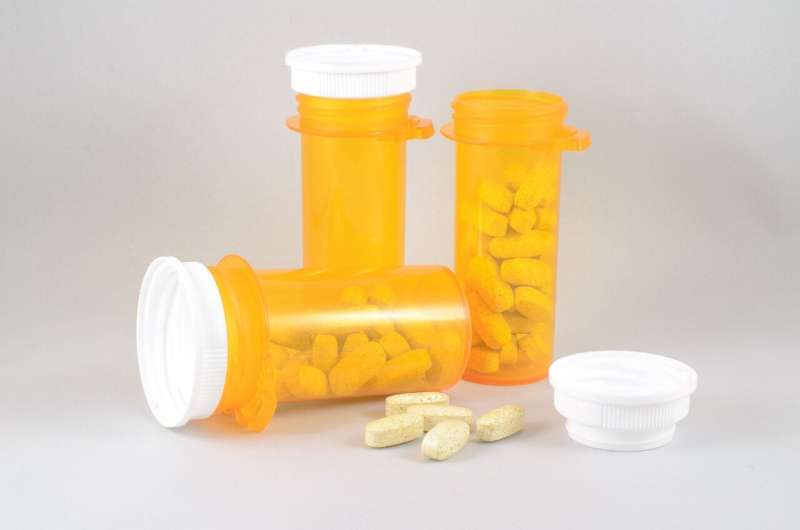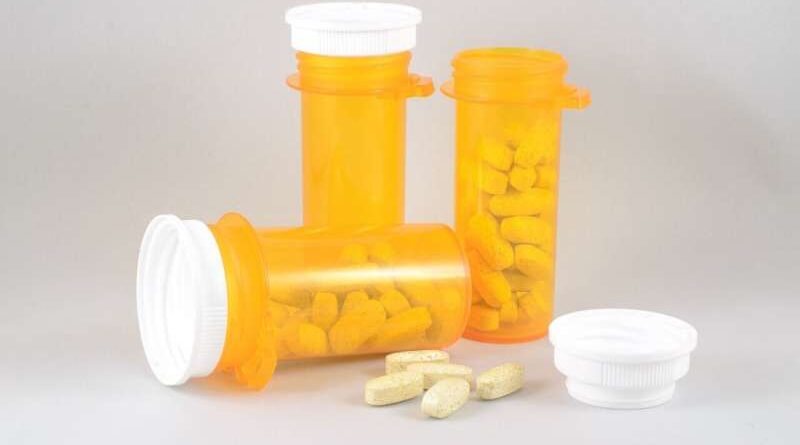Dangerous combinations of psychiatric drugs prescribed for young patients

Credit: Pixabay/CC0 Public Domain
A new study reveals that young patients treated with psychiatric drugs are exposed to potentially harmful substances more often.
Researchers at Rutgers Health and other organizations recently reviewed New York State Medicaid records for more than 141,000 patients receiving any psychiatric medication. About 400 of them had found at least one potentially harmful compound in a month or more. Doctors refer to these as strong drug-drug interactions, and their use is considered “contraindicated” (recommended against).
Senior study author Lawrence Kleinman, a professor of pediatrics at the Rutgers Robert Wood Johnson Medical School, cautioned that while some children whose disease is resistant to conventional treatment may experience greater benefit than harm from caused by the combination, “Good practice requires that patients and caregivers be informed. and agree on the risks and benefits, including informing them that the prescribed medication is often contraindicated.”
Study, published in BMC Primary Careanalyzed 2014 physician data for New York Medicaid enrollees under the age of 21. Although the overall rate of these potentially dangerous compounds is small—about 3 in 1,000 children who filled the prescription though which mental health medication they had at least one month of prescription, and 5 in 1,000. there was any contact—these cases represent a high probability of injury or death. Kleinman noted that New York State Medicaid has previously implemented a program to reduce dangerous drug interactions, suggesting that the numbers may be higher in some populations.
Polypharmacy is very common, with approximately 38% of patients in the study taking two or more medications at least once a month, resulting in over 11,000 unique drug combinations. .
The study provided some reassurance: The most commonly prescribed mental health medications were stimulants commonly used for conditions such as depression/anxiety, and these were not combined with other drugs to cause severe interaction risks. Many of the banned combinations included the antipsychotic drug ziprasidone, which can increase the risk of serious heart rhythm problems such as QT interval prolongation or serotonin syndrome when combined with certain medications. Kleinman noted, “Because of this risk, the FDA has warned that ziprasidone should not be prescribed with other drugs that have shown prolongation of the QT interval.”
About 32% (364) of the 1,121 patients who were prescribed ziprasidone also received a partner’s contraindications for at least 30 days. It increased to 54% when considering the agreement of the prescription at any time.
Other common dangerous combinations included antidepressants such as fluoxetine (Prozac) and trazodone combined with various antipsychotic medications, which are associated with a risk of QT prolongation and serotonin syndrome.
Researchers analyzed physician claims data for all New York State Medicaid enrollees under the age of 21 in 2014, identifying 84 specific behavioral and psychiatric medications. They identified interactions and strong interactions based on drug interaction databases.
The group analyzed different time periods for the corresponding prescriptions: one day, 15 days or 30 days. And during the 30 days, 392 new patients received inconsistent combinations, increasing at 651 for contact.
Allergic ingredients were more common in teenagers and young adults than in young children, with no children under 6 receiving harmful ingredients. Although boys were more likely to receive any mental health medication, there was no gender difference in the potentially harmful use of the two.
Of the more than 20,000 psychiatrists who prescribe psychiatric medications, 386 have prescribed at least one prohibited pair. Most were psychiatrists rather than pediatricians, which Kleinman suggested may be because psychiatrists are more likely to see patients. those with more severe mental illness.
Kleinman added that insufficient research into the treatment of mental illness in children often leaves doctors and families “flying blind.”
Among the limitations of the study was the age of its data. Prescribing practices are likely to change, especially in the wake of COVID-19. Also, the researchers were unable to determine whether patients were taking all medications as prescribed or if doctors and parents made deliberate, informed decisions about harmful ingredients.
However, Kleinman stressed the need for continued awareness of instructional practices to prevent potential harm. He suggested that health systems and insurances implement systems to mark these unusual but about cases that should be investigated.
“We believe our data and methodology can serve as a starting point for such efforts,” Kleinman said. “Ultimately, such ongoing monitoring can reduce dangerous drug interactions and drug-related adverse events.”
Additional information:
Laura M. Borgelt et al, Prevalence of contraindications among behavioral and psychological medicine pediatric populations, BMC Primary Care (2024). DOI: 10.1186/s12875-024-02528-9
Provided by Rutgers University
Excerpt: Risky combinations of psychiatric drugs given to young patients (2024, September 5) Retrieved September 7, 2024 from https://medicalxpress.com/news/2024-09-risky-combinations-psychiatric-drugs -young.html
This document is subject to copyright. Except for any legitimate activity for the purpose of private study or research, no part may be reproduced without written permission. Content is provided for informational purposes only.
#Dangerous #combinations #psychiatric #drugs #prescribed #young #patients
